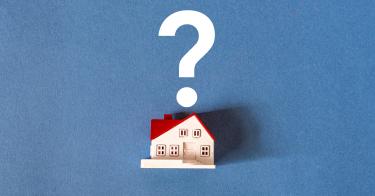Whoever is in the White House next year will have a nationwide real estate mess dumped in his lap, and the wrong public policies could mean a repeat of the last housing collapse.
To finance trillions of dollars in excess government spending over the last several years, the Federal Reserve forced interest rates down to near zero. That reduced borrowing costs for the Treasury, businesses and consumers alike but created ticking time bombs of debt.
Commercial real estate had already overexpanded in many areas of the country before the pandemic, and it was due for a correction. That never happened, however, because interest rates went so low that otherwise unprofitable ventures were sustainable—at least for a few years.
Unlike a conventional home mortgage, most commercial real estate is short-term debt that is frequently rolled over. Nearly $1 trillion, or roughly one-fifth, of these loans will need to be refinanced this year. One-quarter of the loans backed by office properties and nearly 40% of those backed by hotels also mature this year.
>>> Government Is Undercounting Housing Inflation
Many commercial real estate loans that were due in 2023 were extended into this year in the hopes that they could be refinanced at lower interest rates, a hope that has not materialized.
Now, property owners are faced with office buildings and even some apartments that they can’t fill with tenants, so their incomes are down. On the other side of the ledger, higher interest rates have increased their costs. This deadly combination is increasingly causing property owners to default on their loans and turn their devalued properties over to the lenders.
Commercial real estate loans are primarily held by regional banks, not large national financial institutions such as J.P. Morgan or Wells Fargo. More than 30% of small banks’ balance sheets are commercial real estate loans, while that debt occupies less than 7% of the balance sheets of large banks.
The same regional banks that have been on shaky ground for over a year now hold what looks like a ticking time bomb in commercial real estate. As these loans go bad, the banks holding that debt will take massive losses.
Residential loans are no garden party either. Many Americans got adjustable-rate mortgages in 2020 at rock-bottom interest rates, but one type of these loans guarantees those rates for only five years, meaning that higher rates will start in 2025. This same thing happened in the lead-up to the 2007 subprime mortgage crisis.
Inflation has already stretched American families’ budgets paper thin. Higher monthly mortgage payments will push many people over a financial cliff. People are already falling behind on their mortgages.
Instead of dealing with the problem now, the Biden administration has kicked the can down the road on FHA (Federal Housing Administration) loans by extending COVID-era options to borrowers. People can now pay just 75% of their monthly mortgage payment if they are in arrears.
>>> The Housing Crunch Is Causing Americans To Delay Marriage and Children
The extension lasts only until April 30, 2025, and then FHA borrowers will be right back to where they are today—if they’re lucky. Things will likely worsen by then as they continue falling deeper into debt.
Revolving consumer credit, which is mostly credit card debt, is over $1.3 trillion, with annual interest charges exceeding $300 billion. Including all nonmortgage debt, families are now paying annualized interest of $573 billion.
Frighteningly, this is about equal to the interest on mortgage debt for the first time in U.S. history.
Just as the government has kept spending by going deeply into debt (over $34 trillion and counting), consumers have done the same thing. That’s why terms like “air pocket,” “bubble” and even “fake” have been thrown around when describing today’s economic growth.
Positive political spin and cherry-picked data fail to mask the ticking time bomb of debt, like lipstick unable to conceal the pig. The consumer debt spiral is no more sustainable than the government’s trajectory of spending, borrowing and printing money into oblivion.
The unprecedented expansion of federal expenditures over the last several years has far-reaching ripple effects, some of which still haven’t arrived on our shores. Let’s hope the next occupant of the Oval Office has the expertise to navigate the ship of state through the coming real estate storm.
This piece originally appeared in The Washington Times


